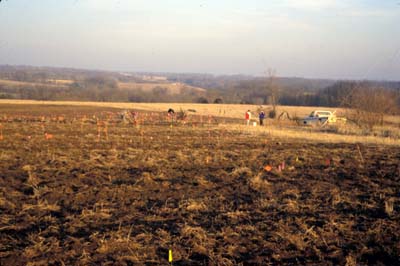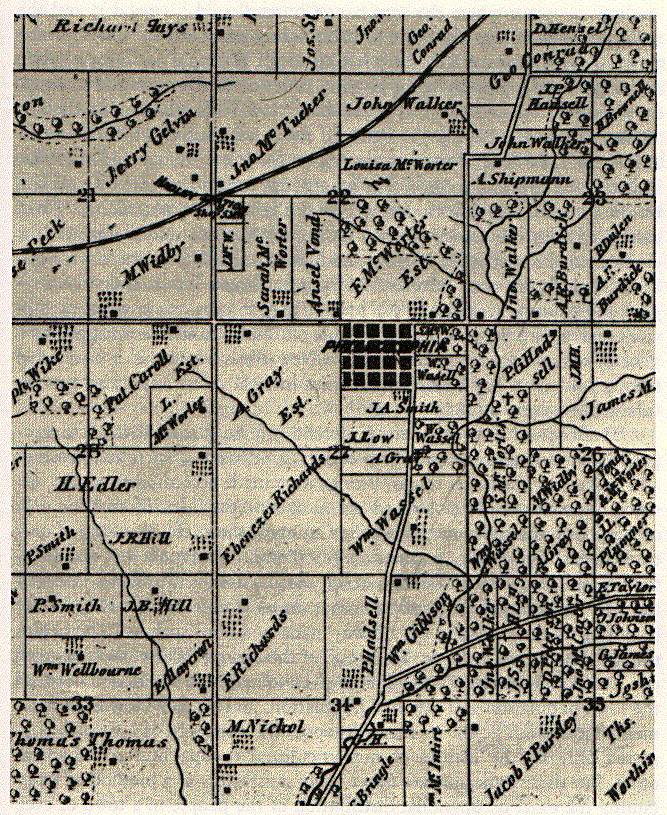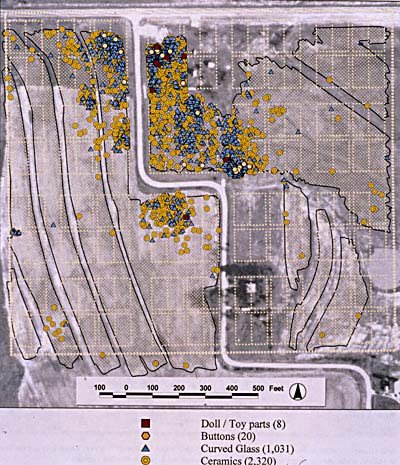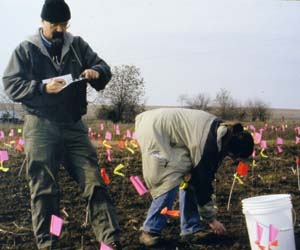New Philadelphia:
An African American Settlement in Illinois

 >
>This was a great achievement for a freed slave in the pre-war era. There was the possibility that a white settler could drive a black man off of his land. Illinois Black Codes were passed in an attempt to prevent black pioneers from settling in Illinois. Because the Military Tract from which Free Frank purchased his land was federally owned, those codes did not apply. He was able to gain a foothold in Pike County while it was scarcely populated and became on of the first developers.
Free Frank had a farmstead where his family grew crops and raised livestock. They raised oats, barley and potatoes. Flax and the sheep thet raised for wool gave them the materials to spin and weave linsey-woolsey cloth. Cattle-raising was encouraged in western Illinois because most of the land was covered in prairie. Open lands could be grazed for free from May to October. Then the cattle were moved to harvested corn fields. In winter, they ate corn and hay. The cost for raising a steer for three to five years was about six to twelve dollars.They could sell for twelve to twenty dollars a head to Ohio drovers. Free Frank also was paid by the county to take in stray horses and keep them until they could be identified or auctioned.
Other commodities produced on the farm included milk (consumed locally), cheese, butter, eggs, honey, and wax. The women of the household usually organized the production of these items. There was a good market for them in Saint Louis.
To get his commodities to market, Frank had to build his own road. By 1835, another main road was built six miles from his farm that gave him faster access to markets, which were Saint Louis and New Orleans via the Mississippi River.
After the railroad was built along a route not including New Philadelphia as a stop (with lobbying by certain white communities), the town stopped growing like many other town that the railroad missed. It was unincorporated in 1885. The town was inhabited until the 1920s. Today the only traces of the town are artifacts on the surface of the land, some house foundations, and a cemetery.

The Archaeology of New Philadelphia
Collaboration by the University of Maryland, the University of Illinois at Springfield, the Illinois State Museum and the New Philadelphia Association carried out a survey in 2002 and 2003 that resulted in the mapping and recovery of more than 7,000 historic and prehistoric artifacts from the town. They include ceramic sherds, drinking vessels, horseshoes, doll parts, nails, window glass, smoking pipes, buttons, and small animal parts.
The continued project, to start in the summer of 2004. For three summers, archaeologists will excavate, sort, and study the artifacts found in and around New Philadelphia. They "will look at the histories of all of the residents of New Philadelphia, describe social relations between blacks and whites through the early twentieth century, and place this information into a larger context of small, rural nineteenth- century black and bi-racial towns."
How Do We Know About New Philadelphia?
Records Search:
Researchers combed the land deeds and census data of Pike County to find out
who owned which properties and who lived in each house and owned each business.
They also took oral histories of older area residents who remember life in
the early twentieth century in the town, especially about race relations.

Walkover Survey:
In late 2002 and early 2003, a walking survey was carried out over the town
of New Philadelphia. First a 26.5-acre area that had been under agriculture
was plowed by two farmers who still owned plows (no-till farming is practiced
now). With the plants gone, surveyors could see 75 per cent of the ground
surface. The areas around old foundations, the cemetery, and private property
were not plowed.
"The survey teams systematically walked over the area, marking each historic and prehistoric artifact with a flag. The flagged artifacts were sequentially numbered, recorded, and collected." (Martin).

The sequenced finds were electronically surveyed and analyzed with GIS software. The 7,073 artifacts are housed in the ISM Research & Collections Center. They have been washed, labeled, preserved in storage, and inventoried. They await further investigation.
Learn more about New Philadelphia University of Maryland Web site on the project.







